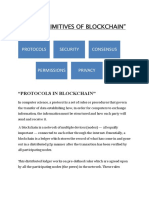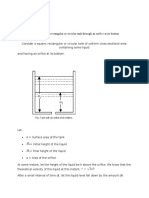0% found this document useful (0 votes)
16 views4 pagesData Processing Slide
The document explains data processing in blockchain networks, focusing on how transaction data is sent and received, particularly in distributed systems like Bitcoin. It discusses the use of a gossip protocol for efficient data propagation among miners, the challenges of network latency, and the importance of consensus mechanisms to resolve conflicts in transaction information. Additionally, it covers the role of blocks in batch processing transactions and the use of Merkle trees for data verification.
Uploaded by
m.shaban.idreesiCopyright
© © All Rights Reserved
We take content rights seriously. If you suspect this is your content, claim it here.
Available Formats
Download as PDF, TXT or read online on Scribd
0% found this document useful (0 votes)
16 views4 pagesData Processing Slide
The document explains data processing in blockchain networks, focusing on how transaction data is sent and received, particularly in distributed systems like Bitcoin. It discusses the use of a gossip protocol for efficient data propagation among miners, the challenges of network latency, and the importance of consensus mechanisms to resolve conflicts in transaction information. Additionally, it covers the role of blocks in batch processing transactions and the use of Merkle trees for data verification.
Uploaded by
m.shaban.idreesiCopyright
© © All Rights Reserved
We take content rights seriously. If you suspect this is your content, claim it here.
Available Formats
Download as PDF, TXT or read online on Scribd
/ 4




























































































